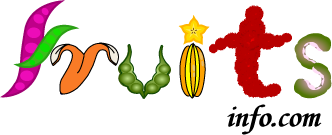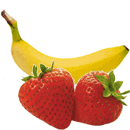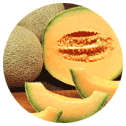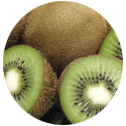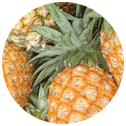 Full List of Fruits
Full List of Fruits  Maqui Fruit
Maqui FruitMaqui Fruit
Scientific name - Aristotelia chilensis
Aristotelia chilensis commonly known as Maqui or Chilean Wine berry is a species having its roots from the Elaeocarpaceae family (Maqui is a Chilean name). Sparsely cultivated they are inhabitant to the Valdivian temperate rainforests of Chile and neighboring regions of southern Argentina. Maqui is an evergreen, small dioecious tree that reaches to a height of 4-5 m in height. With flexible, thin and profuse branches, itís portioned out trunk has a smooth bark. Many aspects come into play while describing the leaves of the tree namely they are simple, opposite, hanging, oval-lanceolate, with serrated edges, naked and coriaceous.
At the age of seven, you can expect the tree to produce berries upto 10kg per year. Resembling the taste of blackberries, they are very small and purple in color, with 4-6 mm in diameter; they contain just about 4-8 aslant seeds.
![]() Nutritional Value of Maqui Fruit
Nutritional Value of Maqui Fruit
| Nutritions | value |
| Protein | 5,15g |
| Carbohydrates | 74,97g |
| Dietary Fiber | 46,30g |
| Total Sugars | 24,23g |
| Total Fat | 7,63g |
| Saturated Fat | 1,09g |
| Water | 9,55g |
| Vitamin C | 2,553g |
| Vitamin E | 751IU |
| Potassium | 763mg |
| Calcium | 255mg |
| Sodium | 24mg |
| Iron | 7,7mg |
| Calories | 389 |
Predominantly due to interest for color and Anthocyanin content, the berries are used for food and dietary supplements. The edible plant is known for its several medicinal values and it is believed to be used for weight loss, Diabetes, fatigue, cardiovascular disease and several other conditions, however it needs more substantiation. A concoction was prepared with the leaves and was used for sore throat and wound dressing. The seeds were used for preparing a Chilean alcoholic beverage. Moreover, it was eaten raw as well. They are a rich source of antioxidants than any discovered food on earth.
The Maqui berries are processed into jam, juice, an astringent or as an ingredient in processed beverages and foods, drying part is required for it. More to the point, before it was consumed in juice form and as whole, but now it is found in a number of dietary supplements such as powders and capsules
![]() Health benefits of Maqui Fruit
Health benefits of Maqui Fruit
 Boosts your immune system
Boosts your immune system
 Enhances your energy levels
Enhances your energy levels
 Promotes Anti Aging
Promotes Anti Aging
 Contributes to Cardiovascular Strength
Contributes to Cardiovascular Strength
 Supports a Healthy Heart
Supports a Healthy Heart
 Aids in Cancer Prevention (more research pending)
Aids in Cancer Prevention (more research pending)
 Reduces Micro Vascular Problems that lead to Heart Attack and Strokes
Reduces Micro Vascular Problems that lead to Heart Attack and Strokes
 Promotes Healthy Blood Sugar Levels
Promotes Healthy Blood Sugar Levels
 Appetite Suppressant
Appetite Suppressant
 Supports Low Blood Pressure
Supports Low Blood Pressure
 Reduces LDL Levels
Reduces LDL Levels
 Detoxification of the Digestive System
Detoxification of the Digestive System
 Prevents diabetes induced retinopathy (blindness)
Prevents diabetes induced retinopathy (blindness)
 Increases Strength and Stamina
Increases Strength and Stamina
 Neutralizes Certain Enzymes that Cause Inflammation and Pain
Neutralizes Certain Enzymes that Cause Inflammation and Pain
 Treats Ailments as Sore Throat, Diarrhea, Ulcers, & Fevers
Treats Ailments as Sore Throat, Diarrhea, Ulcers, & Fevers
During the period of December to March, the berries are collected by families, mainly by the inhabitants of south-central Chile. They collect the produce near the Andes Mountains. The side branches of the tree are collected initially and then itís shaken to separate the berries. Furthermore, a mechanical process is undergone to separate berries from leaves.
The species requires the following environmental conditions to grow well and this is with regards to Chile.
Watering conditions: It flourishes well in humid areas with constant rainfall. They can tolerate very short dry periods, usually not longer than 1 month and dry areas where the drought may last 3 - 5 months. Precipitations of 400 - 800 mm
Light conditions: With great exposure to sun, it requires some amount of protection from direct sunlight, some shadow
